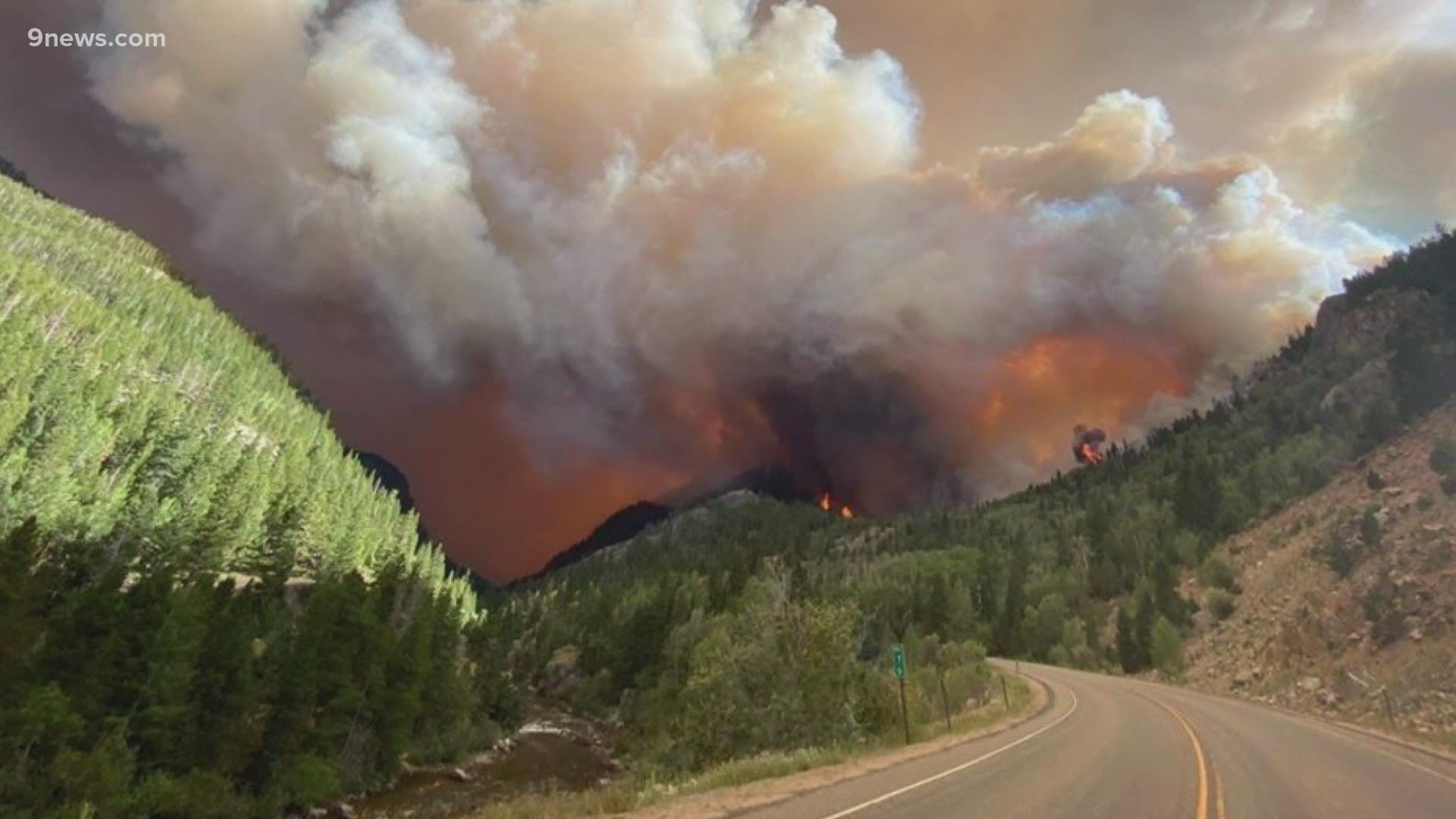COLORADO, USA — Fires are raging in Colorado and around the western U.S., but fire prevention experts say this fire season isn’t surprising.
In fact, it could get worse.
“I hate to say this, but it’s not a surprise,” said Mike Lester, the director of the Colorado State Forest Service.
Lester and his team are wildfire prevention experts. A big part of their job includes mitigation.
When asked about the state of Colorado’s forest management and wildfire mitigation, he said, "we’re not doing particularly well, you can see this from the condition of forests.”
“Drive almost anywhere in Colorado and look at our forest," he added ."There’s some places where beautiful green trees are doing great. You also see a lot of gray, standing dead trees, and that doesn’t help.”
Lester said the problem is too much fuel to burn. He says suppression of fires and not enough forest management have led to the problem. And, he said climate change has created longer fire seasons.
Fires can be healthy for a forest.
“A critical thing to remember is that our forests are fire-adapted,” said Courtney Schultz, an associate professor of forest and natural resource policy at CSU, and the director of the Public Lands Policy Group.
“So we need fire in these forests," she said. "It's going to happen, so if we exclude it, it’s almost like we build up a fire debt that comes due later. And it can often burn hotter and more intensely later and cause more damage to ecosystem and to our infrastructure.”
What can help is forest management. This includes things like removing smaller trees that have accumulated over time, as well as prescribed burns, which can remove fine fuels like needles, branches and shrubs.
During a recent update about the Grizzly Creek Fire, firefighters said a previous prescribed burn area helped them stop a section of the currently-burning fire.
“It was actually the day that there was big huge runs that went four miles along both sides of the canyon and there was a lot of concern for a lot of the values at risk down valley, being Dotsero, Gypsum, the entire I-70 corridor,” said Lathan Johnson of the Upper Colorado River Interagency Fire Management Unit.
“So the fire was moving along it and it hit that prescribed burn area, and you could actually see it on the infrared map the next morning where it actually didn't burn where those prescribed burn units was.”
“We’re going to have to start thinking much more about fire being a natural process and having to live with fire,” Schultz said. “There are a number of reasons why its going to become more intense. Some of it is climate change.
The predictions are that we’re going to see longer fire seasons, hotter and dryer conditions. We also have more people living in and near forest more than ever. A lot more human ignitions and that will cause more fires.”
In addition to forest management, Schultz said wildfire mitigation includes better community protection – which involves “thinking about where and how we build homes.”
There is an urgency around what’s burning right now. But the experts say looking ahead is important, too.
“If you think about whats happening in Colorado or California, we’re seeing across the west really hot and dry conditions,” Schultz said.
“We’re still not out of fire season, and we’re seeing a lot of burning and people think this is probably a picture of things to come as climate change intensifies. So we need to get more serious about how were going to prepare for these fires because its probably going to become more common in future.”
“We do have to invest in our forest because if we don't, there’s no reason to expect any kind of different result," Lester added.
There is ongoing wildfire mitigation work in Colorado.
For example, in fiscal year 2019, the U.S Forest Service (USFS) said it treated about 203,000 thousand acres in the five-state Rocky Mountain region. That included 92,000 thousand acres (or 143 square miles) in Colorado.
The USFS said it spent more than $18.6 million on treatment projects in national forests in Colorado in 2019.
SUGGESTED VIDEOS: Colorado wildfires

